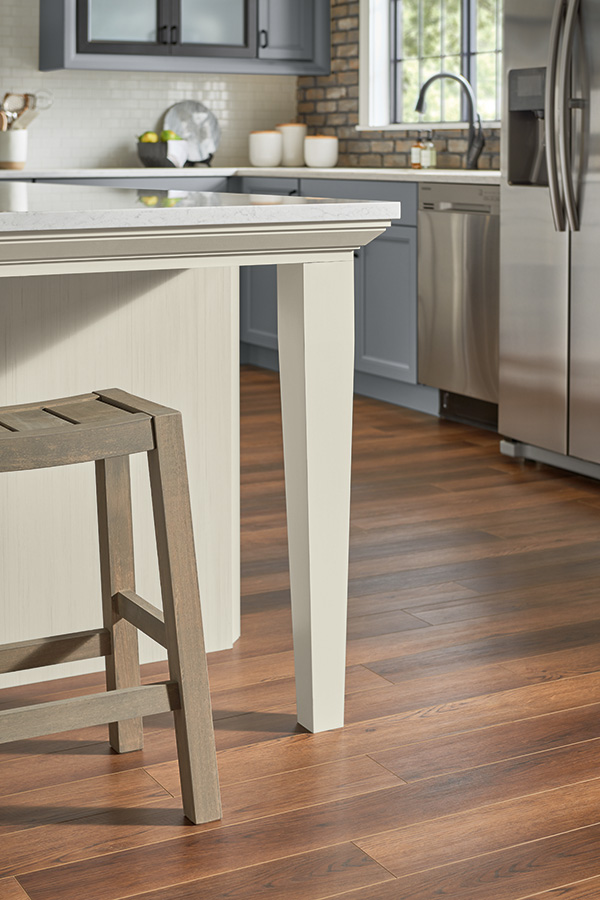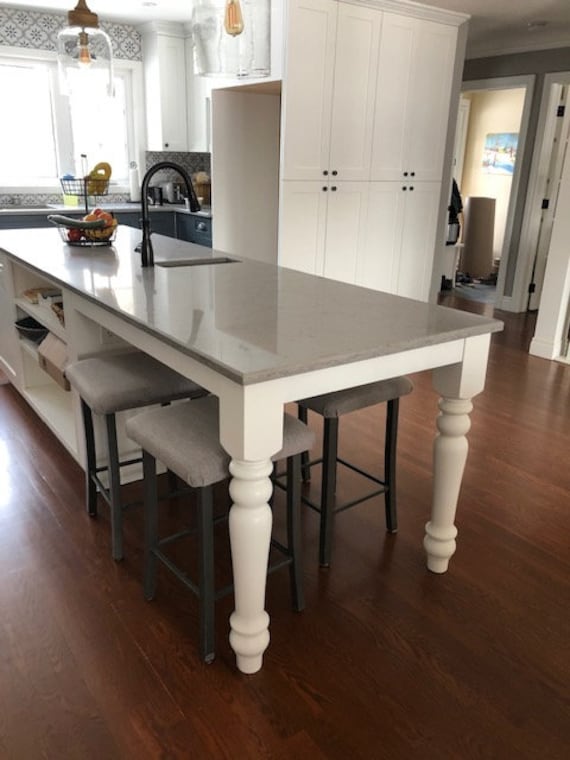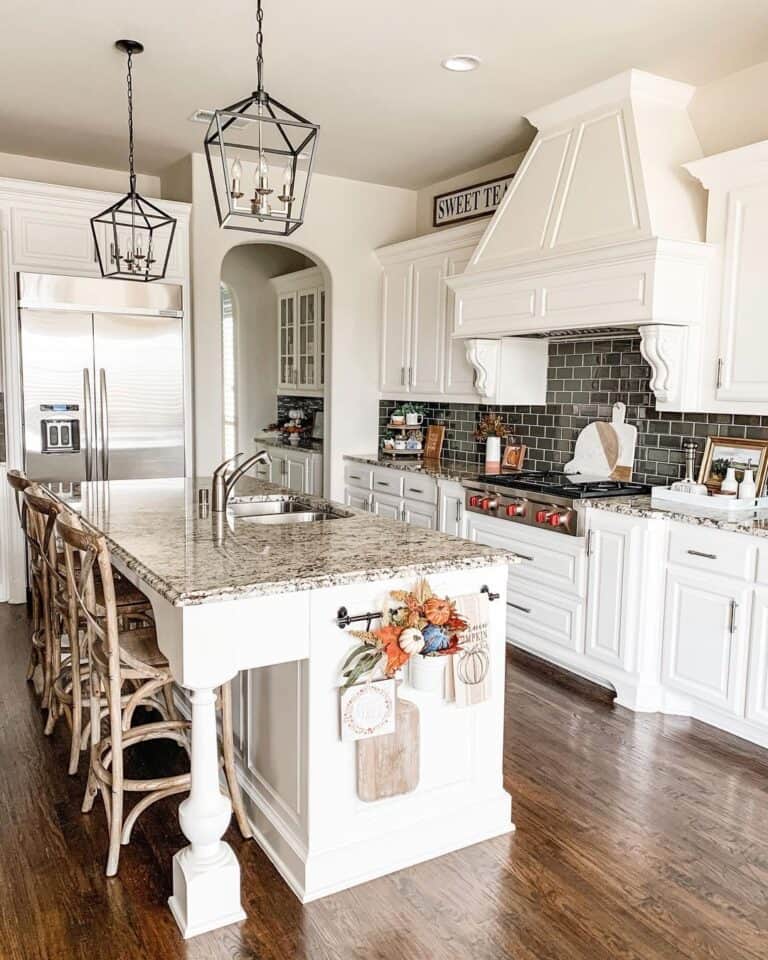Trendy Kitchen Island Legs: Raise Your Kitchen Design
Trendy Kitchen Island Legs: Raise Your Kitchen Design
Blog Article
Vital Tips for Choosing the Perfect Table for Your Cooking Area
Picking the ideal dining table for your kitchen is even more than just a matter of taste; it necessitates a thorough understanding of your area and needs. Begin by measuring your readily available area to ensure enough clearance for activity. The shape of the table plays a critical role; while rectangle-shaped tables match larger locations, rounded ones foster affection, and extendable alternatives provide adaptability. Product option is equally crucial, with hardwoods offering sturdiness and glass borrowing a modern-day touch. The table ought to harmonize with your kitchen's aesthetics and suit your household pleasantly. What other aspects might influence this essential decision?
Procedure Your Room
Picking the excellent dining table begins with a careful assessment of your available area. This foundational action makes sure that the table not only fits easily within the area yet likewise complements the total design and performance of your eating location.
It is essential to leave adequate space for chairs to be pulled out and for individuals to move around the table without blockage. A general policy of thumb is to permit at the very least 36 inches of clearance from the edge of the table to the closest wall or item of furniture.
Additionally, believe regarding the number of people you commonly entertain and whether you require additional space for guests. Selecting an extendable table can provide adaptability, allowing you to fit differing numbers of restaurants. By properly gauging your room, you lay the foundation for selecting an eating table that boosts both the visual appeals and functionality of your dining location.
Select the Right Forming

On the various other hand, round tables are excellent for smaller sized kitchen areas or intimate gatherings, as they promote discussion by allowing every person to encounter each other. They additionally give a sense of comfort and can fit well in tighter spaces because of their absence of sharp edges. Oval tables use the ideal of both globes, integrating the size of rectangular tables with the intimacy of round ones, making them versatile for various setups.
Square tables are an additional choice, especially matched for square-shaped areas. They create a symmetrical and modern look, promoting an equal dining experience for all seated.
Material Considerations
When choosing an eating table, product considerations are critical in identifying the table's sturdiness, maintenance demands, and total visual. Wood is a timeless choice, offering classic charm and toughness.
Glass-topped tables supply a contemporary, smooth look and can make a space show up bigger because of their transparency. They require frequent cleansing to protect against finger prints and spots. In addition, solidified glass is advised for its added toughness and safety.

Last but not look here least, composite materials like MDF (Medium-Density Fiber board) or plywood are budget-friendly options. These materials can simulate the appearance of solid wood yet might not offer the very same durability. They are typically less complicated to clean yet can be at risk to water damages if not appropriately sealed.
Eventually, the selection of material need to straighten with your cooking area's design, your way of living requires, and your spending plan constraints. (kitchen island legs)
Seating Capability and Convenience
Exactly how do you identify the appropriate seats ability and convenience for your table? This critical step includes analyzing both the physical area readily available in your kitchen area and your family's functional needs. Begin by gauging your kitchen area to make certain the table fits easily, allowing at the very least 36 inches of clearance around it for simple motion. Think about the variety of people that commonly dine with each other, as this will certainly affect the table size. For a family members of four, a rectangle-shaped table of 48 inches long or a round table with a 48-inch diameter is usually enough.
The elevation of the table must ideally be around 30 inches, offering a well balanced ergonomic stance for seated restaurants. Chairs need to have a seat elevation of 18 to 20 inches to make sure a comfortable dining position.
Style and Aesthetic Appeal
Picking a table that fits your style and appearance includes balancing individual preference with the existing design of your eating room. The eating table is usually the focal point of the cooking area, and its style needs to enhance the general theme of the room. Whether Full Article your kitchen flaunts a modern, minimalist appearance or a rustic, farmhouse charm, the table you select need to integrate with these elements to develop a natural and welcoming ambience.
Take into consideration materials very carefully; wood supplies an ageless appeal and can vary from abundant mahogany for a traditional seek to lighter oak for a modern feeling. Steel and glass tables, on the other hand, can present a smooth, commercial edge to your cooking area. Do not neglect the table's form-- rectangular tables are timeless and flexible, while round and oval choices can foster an extra intimate eating experience.
Additionally, pay close interest to details and surfaces. A distressed finish may include character and warmth, whereas a glossy surface area can add to a tidy, modern-day aesthetic. Ultimately, your dining table ought to not only in shape perfectly right into your cooking area's design yet also show your individual design, boosting the space both functionally and visually.
Conclusion
In conclusion, picking the ideal table for a kitchen requires cautious evaluation of room, shape, material, seating ability, and aesthetic harmony. Ensuring a minimal clearance of 36 inches assists in comfortable motion, while the option of form improves spatial characteristics. Product selection effects resilience and layout, making it crucial to straighten with the kitchen's overall visual. Eventually, a well-chosen dining table cultivates an this page inviting ambience and accommodates the household pleasantly, hence boosting the eating experience.

When selecting an eating table, product factors to consider are vital in figuring out the table's longevity, upkeep requirements, and general visual. For a household of 4, a rectangle-shaped table of 48 inches long or a round table with a 48-inch diameter is usually adequate.
Do not ignore the table's shape-- rectangular tables are functional and traditional, while round and oblong options can foster an extra intimate dining experience. kitchen island legs.
Report this page